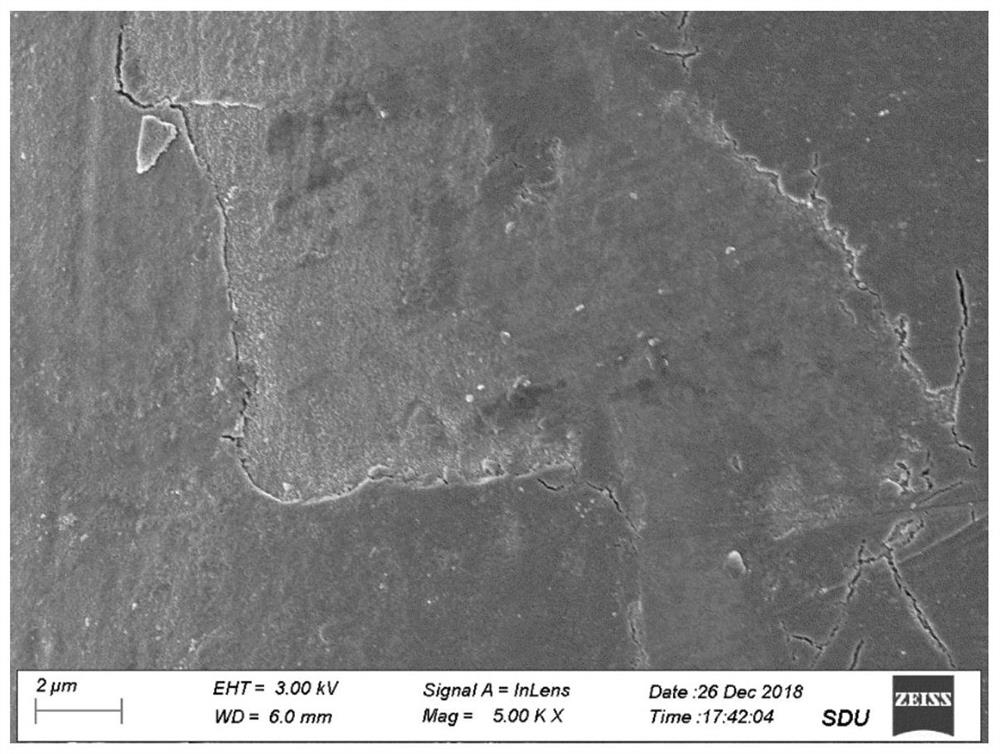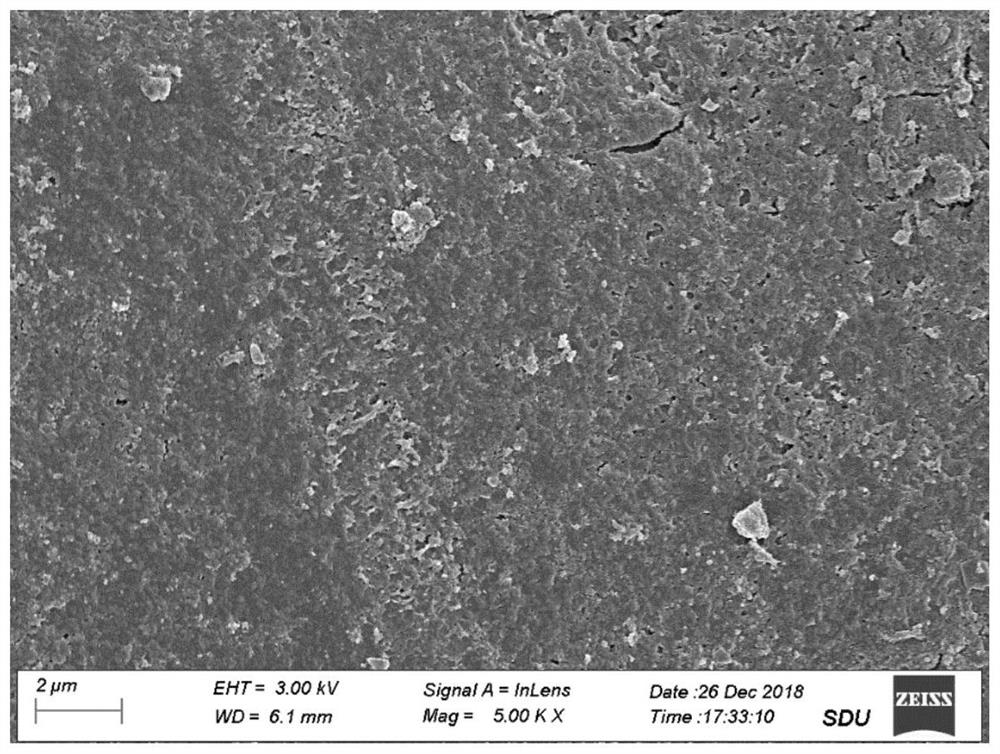A preparation method of superhydrophilic self-cleaning coating based on cation-π interaction
A self-cleaning coating, cationic technology, applied in the field of super-hydrophilic materials, can solve the problems of large molecular radius of cationic polymers, cumbersome preparation process of modified separation membrane, thick hydration layer, etc. Cleaning performance, easy operation effect
- Summary
- Abstract
- Description
- Claims
- Application Information
AI Technical Summary
Problems solved by technology
Method used
Image
Examples
Embodiment 1
[0037] A preparation method of a superhydrophilic self-cleaning coating based on cation-π action, comprising the steps of:
[0038] Dissolve 2g tannic acid (TA) in 40mL aqueous sodium hydroxide solution (pH is 8), polyphenol alkaline solution; then add 5g NaCl to the polyphenol alkaline solution, mix and dissolve to obtain a stock solution; Then, the base copper mesh (200 mesh) was immersed in the stock solution, soaked for 48 hours under stirring conditions, and then washed with distilled water and dried to prepare a coated modified copper mesh, that is, a TA-Na modified copper mesh.
Embodiment 2
[0040] A preparation method of a superhydrophilic self-cleaning coating based on cation-π action, comprising the steps of:
[0041] Dissolve 1g tannic acid (TA) in 40mL aqueous sodium hydroxide solution (pH is 8), polyphenol alkaline solution; then add 5g tetramethylammonium chloride to the polyphenol alkaline solution, mix and dissolve The stock solution was obtained; then the base copper mesh (200 mesh) was immersed in the stock solution, soaked for 24 hours under stirring conditions, and then washed with distilled water and dried to prepare a coated modified copper mesh, that is, a TA-TMA modified copper mesh.
Embodiment 3
[0043] A preparation method of a superhydrophilic self-cleaning coating based on cation-π effect, as described in Example 2, the difference is: replace the substrate with glasses, and only coat one side of the glasses, and the other steps Under the same conditions as in Example 2, TA-TMA modified glasses were prepared.
PUM
| Property | Measurement | Unit |
|---|---|---|
| concentration | aaaaa | aaaaa |
Abstract
Description
Claims
Application Information
 Login to View More
Login to View More - R&D
- Intellectual Property
- Life Sciences
- Materials
- Tech Scout
- Unparalleled Data Quality
- Higher Quality Content
- 60% Fewer Hallucinations
Browse by: Latest US Patents, China's latest patents, Technical Efficacy Thesaurus, Application Domain, Technology Topic, Popular Technical Reports.
© 2025 PatSnap. All rights reserved.Legal|Privacy policy|Modern Slavery Act Transparency Statement|Sitemap|About US| Contact US: help@patsnap.com



